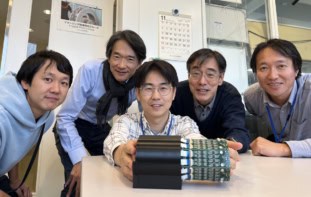
Bacteria have been genetically engineered to produce distinctive ultrasound signals, making then potentially useful for medical imaging. Protein-enclosed pockets known as “gas vesicles” are usually found in aquatic bacteria to keep them buoyant, but a team of biophysicists led by Mikhail Shapiro at the California Institute of Technology has created a gene that allows the vesicles to appear in other bacteria.
Shapiro’s team showed how pulses of ultrasound waves passing through their modified bacteria were scattered in characteristic patterns, which were picked up as echoes by the ultrasound detector. This scattering is caused by the density difference between gas vesicles and their surroundings. However, above a certain pulse pressure, the vesicles collapsed, meaning ultrasound waves passed through the bacteria undisturbed. This collapse changed the detected signal abruptly.
Non-invasive tracers
Once the vesicles collapsed, Shapiro’s team realized that the remaining detected signal could be considered background noise, which they could subtract from the scattered signal to produce high-resolution images of where the bacteria were residing. This was a particularly significant observation, as it meant that bacteria carrying the acoustic response gene could be used as non-invasive medical tracers.
Tracers such as luminescent bacteria and radioactive isotopes are used to take images of inside the body. However, these agents are often either disruptive to the body, or cannot image deep below the skin. Shapiro’s bacteria would allow for imaging deep inside the gut, and even inside tumours. The technique could give detailed maps of internal organs, with spatial resolution as small as 100 µm.
Fine-tuned response
In further work, Shapiro and colleagues altered bacterial genetics further to create gas vesicles that produced different scattering signals, and collapsed at different pulse pressures. With multiple different types of bacteria being used as tracers, more complex biological images could be built up. They now hope to diversify the ultrasound capabilities of their bacteria by fine-tuning the acoustic response gene even further.
The new technique is described in Nature.



